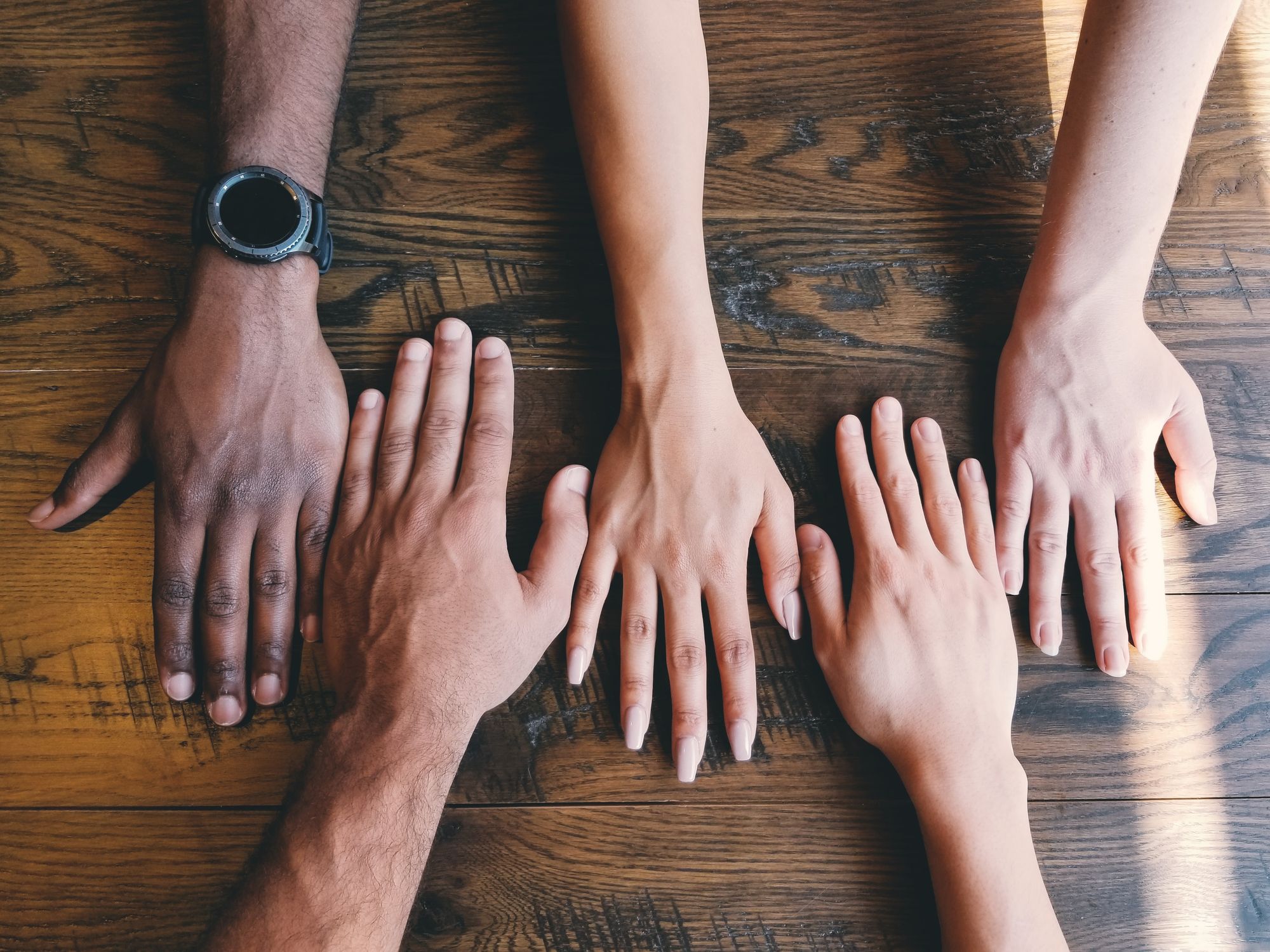Colorism: Racism’s Twisted Sibling
“I remember a time when I too felt unbeautiful. . .. I got teased and taunted about my night-shaded skin. And my one prayer to God, the miracle worker, was that I would wake up lighter-skinned..."

For some reason, there are people who believe that siblings, children, and even spouses, should match—like a pair of socks. And when skin color doesn’t match according to their belief systems, they act out in ways that range from humorous to cruel.
Southwest Airlines is on the other end of a lawsuit by a white mother who was accused of trafficking her biracial daughter by a flight attendant triggered by their different skin colors. Of course, the flight attendant reportedly said it was the young girl’s crying that was suspicious. We learned that the mother and daughter were on the way to a funeral. The flight attendant is reported to have said the mom instructed the child not to speak to anyone. The mom told reporters that was not true. The mother is suing Southwest for racial profiling. The question is would the flight attendant have been suspicious if the mother and daughter’s skin color, “matched?”
I know something about this. Like many south Louisiana or racially mixed families, my siblings and I looked nothing like our mother. She was no doubt our birth mother and raised us, but to the world, she wasn’t a match.
Among the amusing stories we tell are the times people would ask my mom when she adopted, “those black children.” Four of us? Not many people adopt four kids! All they had to see was our unquestionably Black father, game over.
Or the first time she’d volunteer to be room mother at our elementary schools and the teacher called a Latina or Italian child saying, “(name), your mother’s here with us today.” That made us defensive and possessive of our mom. That’s MY mother!
On one of my mom’s visits to Houston while I lived there, I called my nail salon and made two appointments letting them know my mother would need one to get her nails done, also. When we walked in, the Vietnamese women who saw me every few weeks for several years, stopped and stared. My regular technician leaned toward me as I sat down and asked; “Dat you mudder?” I remember the conversation like yesterday.
Me: “Yes, that’s my mother.”
Her: “No. You adopted.”
Me: “No, I’m not adopted, I would know that.”
Her: “But you mudder white.”
Me: “She’s not 100% white, she’s part white.” That went on until she finally gave up asking, and my mom rolled her eyes to the ceiling, over it.

Years later, when a brain tumor made us think our mom had dementia, I insisted she come to Houston for medical treatment. It was too late to save her. She had been living back in rural Louisiana where she felt more at home after decades in California. But her hometown had poor access to modern medical care. A white girlfriend who graciously came to the hospital a few times to let me get some rest told me the nurses checking in kept asking her if “her” mother had this or that. We laughed about that.
Be sure and subscribe to receive our stories weekly.
If you can, we'd love it if you'd become a paid subscriber.
One day, I left my mother’s hospital bedside to go home and shower before returning to sit with her. While I was at a home, a nurse called to say she had passed away. The funeral home was apparently called by someone who hadn’t seen me because they color-matched my mom to the company. I was sitting by her bedside when a man from the Cristo Rey Funeral Home walked in pulling their branded gurney. He looked at me, stopped and delicately asked; “Your mother?” I said, “Yes.” And I thought to myself, even in death, Ma.
Fortunately, my feisty mom was never accused of trafficking us, but the issue of colorism was painful and frustrating. She explained to us that growing up in south Louisiana in the 1920s and ‘30s, she and her siblings experienced acceptance or resentment, favor or foes, from Black and White people. Black people either gravitated to the obvious influences of a forced European beauty standard or resented the assumed privilege that came with light skin, keen features, and straight hair. White people either seemed to feel comfort because of the near-skin color match, or discomfort because of the manifestation of American’s dirty little secret---people who don’t look alike have children—oh my!
What’s not amusing about colorism is the fact that it is an aspect of racial discrimination based on white supremacy.
The common definition is: “Discrimination based on skin color, also known as colorism, or shadeism, is a form of prejudice and discrimination in which people of certain ethnic groups or people who are perceived as belonging to a darker skinned race are treated differently based on their darker skin color.”
I didn’t have to go to Wikipedia for this but did anyway:
“Colorism manifests in the psychology of a people, and their concept of beauty, wealth, and privilege. A key difference between racism and colorism is that while racism deals with the subjugation of one group by another or the belief in racial supremacy, colorism deals with in-group discrimination in addition to between-group discrimination.”
In other words, using color to define people, their circumstances, or their value, is based on racism.
Colorism is in no way an America-only issue. Skin lightening in East Asia. The color of skin’s influence on the caste system in India. The influence of colonialism in Africa that set a beauty standard which defined the features of Black women as unattractive. And the “brown paper bag test,” in New Orleans. Access to certain clubs or events required patrons’ skin to be the color of a brown bag or lighter.
This sick view of randomly assigned attributes for acceptance is particularly cruel when it involves children.
My niece whose father was an early version of Tiger Woods, was often asked why her mother was so brown. Of my four grandchildren, two have light skin because their mother is Asian, and two have darker skin because their father is Nigerian. My hope is that there will never be a day when one of their parents is accused of trafficking them on an airplane. Or God forbid, they are made to feel inferior because their skin doesn’t match the way teachers or classmates think it should.
These words from Academy Award-winning actress Lupita Nyong’o who is Kenyan and Mexican, educated Hollywood:
“I remember a time when I too felt unbeautiful. . .. I got teased and taunted about my night-shaded skin. And my one prayer to God, the miracle worker, was that I would wake up lighter-skinned. . .. And when I was a teenager, my self-hate grew worse, as you can imagine happens with adolescence. … And so, I hope that my presence on your screens and in the magazines may lead you, young girl, on a similar journey. That you will feel the validation of your external beauty but also get to the deeper business of being beautiful inside. There is no shade in that beauty.”
I hope so, too.
